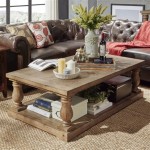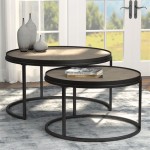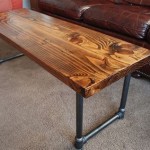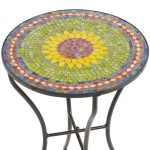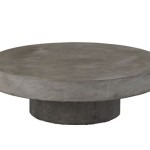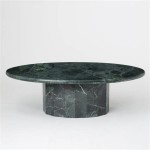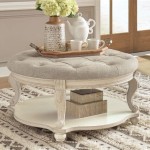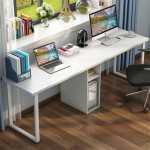How to Measure a Circular Table
Measuring a circular table accurately is essential for a variety of reasons, including purchasing suitable tablecloths, determining seating capacity, and properly fitting the table into a designated space. Unlike rectangular or square tables, circular tables require a slightly different approach to ensure accurate measurements. The primary measurement needed for a circular table is its diameter. From this measurement, the circumference and the area can be calculated, providing a comprehensive understanding of the table's size.
This article will outline the steps involved in accurately measuring the diameter of a circular table, along with explanations of how to calculate the circumference and area based on this measurement. It will also cover potential pitfalls to avoid during the measurement process.
Determining the Diameter
The diameter of a circle is the straight-line distance from one edge of the circle, through the center, to the opposite edge. Accurately determining this measurement is the foundation for understanding the size of a circular table. Various methods can be used to measure the diameter. Each method possesses its own strengths and weaknesses depending on the tools available and the precision required.
Method 1: Direct Measurement with a Measuring Tape: This is the most straightforward approach, provided the center of the table can be identified or estimated with reasonable accuracy. Lay the measuring tape across the table. Ensure that the tape passes through the center point of the table. If the center point is not easily discernible, visually estimate the point that appears to be the middle of the table. Read the measurement where the tape reaches the opposite edge. This reading represents the diameter of the table. Multiple measurements should be taken, rotating the measuring tape slightly each time, to ensure the largest possible diameter is captured. Discrepancies in these measurements indicate the table may not be perfectly circular, in which case averaging the measurements will provide a reasonable approximation.
Method 2: Using a Straightedge and Measuring Tape: This method is beneficial when the center of the table is difficult to locate visually or when dealing with a very large table. Place a straightedge (e.g., a long level, a yardstick, or a long board) across the table. The straightedge should be positioned as close to the visual center as possible. Next, use a measuring tape to measure the distance from one edge of the table to the straightedge and then from the other edge of the table to the straightedge on the opposite side. Add these two measurements together. This sum represents the diameter of the table. As with direct measurement, take multiple measurements with the straightedge in slightly different positions to account for potential imperfections in the circular shape. Averaging these measurements enhances accuracy.
Method 3: Using a Framing Square (for Smaller Tables): For smaller tables, a framing square can provide a more accurate right angle for measurement. Place one arm of the framing square against the edge of the table. Use a pencil to mark the point where the other arm of the framing square intersects the table's edge. Repeat this process at a point approximately 90 degrees away from the first mark. You now have two points on the circumference of the table and a reasonably accurate representation of a chord. Use a straightedge to connect these two points. Measure the length of this chord. The point directly in the middle of the chord will be the closest point on the circumference to the center axis for the diameter measurement. Proceed with measuring the diameter using a measuring tape from the midpoint of the chord through the estimated table center to the opposite edge.
Regardless of the method employed, it is crucial to use a high-quality measuring tape that is not stretched or damaged. Inaccurate measuring tools will invariably lead to errors in the final measurements. Measuring from the floor to the tabletop will provide the table's height. This measurement is crucial for selecting chairs of appropriate height.
Calculating Circumference and Area
Once the diameter has been accurately measured, calculating the circumference and area of the circular table becomes a straightforward process using mathematical formulas. These calculations are helpful for determining the amount of fabric required for a tablecloth or understanding the table's overall surface area.
Calculating Circumference: The circumference of a circle is the distance around its outer edge. The formula for calculating circumference (C) is C = πd, where π (pi) is a mathematical constant approximately equal to 3.14159, and d is the diameter. For example, if the diameter of the table is 48 inches, the circumference would be approximately 3.14159 * 48 inches, which equals approximately 150.8 inches. Rounding this value to a reasonable degree of precision is acceptable, depending on the application.
Calculating Area: The area of a circle is the amount of space enclosed within its boundary. The formula for calculating area (A) is A = πr², where π (pi) is the same mathematical constant, and r is the radius. The radius is half the diameter. Therefore, if the diameter of the table is 48 inches, the radius would be 24 inches. Plugging this into the formula, the area would be approximately 3.14159 * (24 inches)², which equals approximately 1809.56 square inches. Again, rounding this value to a reasonable degree of precision is appropriate.
When calculating circumference and area, consistency in units is essential. If the diameter is measured in inches, the circumference will be in inches and the area will be in square inches. If the diameter is measured in centimeters, the circumference will be in centimeters and the area will be in square centimeters.
Avoiding Common Measurement Errors
Several common errors can occur when measuring a circular table, leading to inaccurate results. Being aware of these potential pitfalls can help ensure accurate measurements.
Error 1: Incorrect Center Point Estimation: A frequent mistake is misjudging the center point of the table, especially for larger tables. This error is compounded if the table is not perfectly circular. Even a slight deviation from the true center can result in a significant difference in diameter measurement. Using the straightedge method and taking multiple measurements from different angles can mitigate this issue. A plumb bob can also be used to visually verify the center point if hanging a plumb line from the ceiling is feasible.
Error 2: Measuring Tape Sag: When measuring the diameter of a large table with a flexible measuring tape, the tape can sag in the middle, leading to an underestimation of the distance. To avoid this, ensure the measuring tape is taut and straight across the table. Using a stiffer measuring tool, such as a laser distance measurer or a rigid measuring rod, can minimize sag.
Error 3: Inaccurate Reading of the Measuring Tape: Parallax error, which occurs when the eye is not directly aligned with the measurement marking on the tape, can also lead to inaccuracies. Ensure the eye is positioned directly above the measurement point to avoid parallax error. Also, verify the units of measurement on the tape (e.g., inches, centimeters) and ensure the correct units are used in subsequent calculations.
Error 4: Ignoring Imperfections in the Circular Shape: Many circular tables are not perfectly circular due to manufacturing tolerances or wear and tear. Measuring only one diameter may not accurately represent the table's overall size. Taking multiple diameter measurements at different angles and averaging them will provide a more accurate representation, especially if the table shows noticeable variances in its circularity.
By carefully employing the techniques described above and avoiding these common errors, one can accurately measure the diameter of a circular table, calculate its circumference and area, and obtain the necessary information for various practical applications.

How Do I Measure My Table To Order A Glass Top

How Do I Calculate The Right Linen Size For A Round Table Party Al Ltd

How To Choose The Correct Size Tablecloth For Your Table

How To Choose Tablecloths Understanding Correct Measurements Your Chair Covers Inc

How To Measure For A Outdoor Round Table Cover

3 Easy Ways To Measure Tablecloth Sizes Your Table Linens Size Guide

Round Tables Types Materials Benefits Dimensions And Much More
Tips On How To Measure Your Dining Space

Diy Round Tablecloth Tutorial

Round Tables Types Materials Benefits Dimensions And Much More
Related Posts

